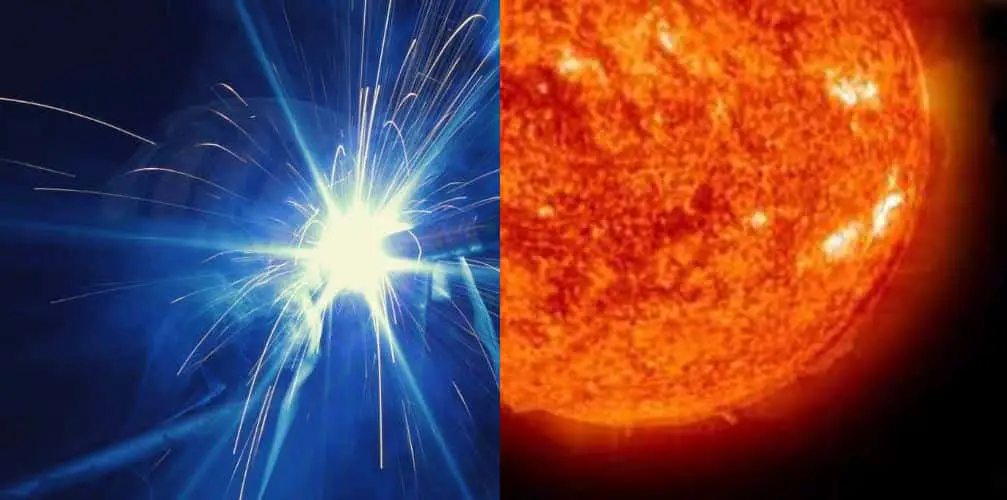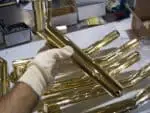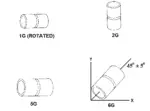First invented and used in the 19th century in Russia, arc welding has ever since evolved. Though, what hasn’t changed are the many questions that revolve around welding?
The mammoth amounts of heat and rays produced during welding give rise to the most confusing question of all times – is a welding arc hotter than the Sun?
The heat produced by a welding arc is as high as 3400 K. What’s even more interesting is the fact that the temperature of a welding arc soars up to 6500 degrees F.
These high levels of heat, brightness, and temperature naturally makes people wonder if a welding arc is indeed hotter than the Sun.
No matter the assumptions, the simple fact is that a welding arc is not hotter than the Sun, nothing is. The heat produced by the Sun is 5800 K. And the temperature of the Sun’s surface is about 10,000 degrees F, making it about 8.4 times brighter than the brightest welding arc out there.
Despite this huge difference in temperature, the heat from the welding arc is way more dangerous than the heat from the Sun. The reason being, whilst the Sun is approximately 150 million kilometres away from the Earth, the welding arc is less than a foot away.
There are many such interesting parameters that make welding way riskier than the Sun. Dive in to find all such facts at length.
How hot is welding arc – is it hotter than the Sun?
The temperature of arc welding is about 3400 degrees Celsius. On the other hand, the surface temperature of the Sun is close to 5800 degrees C. Clearly, both are hot, but the Sun is hotter.
According to these stats, the heat and rays from the Sun should be more damaging than welding, but that’s not true! Welding feels hotter than the Sun and is more dangerous as well.
There are two reasons that despite being less hot than the Sun, welding is riskier. Have a look!
1.) The Sun is far, far away. The welding arc is not even an arm’s distance away.
2.) The atmosphere filters most UV rays before they reach the surface of the Earth. There’s no such natural barrier between the UV rays emitted from the welding arc and the welder.
What diseases do welders get?
Before we jump to the what, let’s address the Why and When – Why is welding risky for health and when?
Welding emits UV rays (UVA, UVB, as well as UVC). When coming from the Sun, the atmosphere blocks a large part of these rays, but there’s no such privilege in welding.
When the skin and eyes are exposed to UV rays at such close proximity every single day, the health risks are substantial.
It’s not only UV rays that are the culprits behind health risks due to welding, intense heat, fumes, debris, flame, and excessive brightness are equally dangerous.
However, all welders do not suffer from the diseases that welding is responsible for. Only those welders that do not wear the right PPE for welding are at the risk of getting diseases.
If you carefully wear passive welding helmets or auto-darkening welding helmets, welding boots, and welding gloves, you won’t suffer. Period!
That said, in the lapse of proper PPE, welders are at serious risk of diseases like:
-
-
- Cancers from UV rays.
- Arc eye.
- Blindness.
- Cataract.
- Pneumonia.
- Damage to optic nerves.
- Severe third-degree burns.
- Keratitis.
-
How to Protect Yourself From UV Damage Due to Welding?
There are certain things that you shouldn’t skip as a welder. One of them is blocking UV exposure. Here’s how you can do it:
1.) Wear a broad-spectrum sunscreen. A sunblock will also work wonders
2.) Use auto-darkening welding helmets with a reaction time of at least 1/25000th of a second.
3.) Not just the helmet, wear gloves, boots, overalls, and welding glasses too.
4.) None of the PPE gears you’re wearing should be damaged even slightly.
FAQs
1. Can arc welding give you a sunburn?
UVA rays out of the 3 types give sunburns. Since it’s produced by the welding arc too, direct and long-term exposure can definitely cause sunburn.
No. Welders who are very particular about their safety and wear the best welding helmets with the best auto-darkening reaction time will not go blind.
3. Can welding give you a tan?
Indeed, yes. Heat and UV rays are the two reasons behind tanning. Much like the Sun, both of them are byproducts of welding. So, welding can give you a tan.
4. Does sunscreen help welding?
A high SPF broadband sunscreen prevents sunburns and tanning. Since both these conditions can affect welders, sunscreens can protect welders much like they protect people from the Sun.
5. Is it bad to look at welding?
If you’re not wearing auto-darkening welding helmets, you’re putting your eyes at the risk of serious damage. So, yes, without a good quality ANSI-approved welding helmet, it is indeed very bad to look at welding.
Even if the eyes are exposed to a welding arc for no more than 5 seconds, it still causes keratitis. The only way that you can directly look at the welding arc without compromising safety is by wearing a proper welding helmet.
6. How bright is welding compared to the Sun?
To put it simply, the opposite is true. Welding is not brighter than the Sun. It’s the Sun that is roughly 8.4 times brighter than the welding arc.
7. Should you shower after welding?
Welding is bound to make you hot. The conditions are pretty intense. Once you’re done for the day, a cold shower is always bliss.
In fact, it’s not just for your sake that you should take a shower before heading out in public. Your clothes carry harmful toxins from welding. Hence, a shower is important for the sake of the health of other people too.
Concluding Thoughts:
It’s as clear as the summer sky that the welding arc is not hotter than the Sun. It’s neither brighter than the Sun. Yet, it’s riskier and more harmful for health.
Since a welder is in very close proximity to the welder arc, the risks involved are much higher. However, the welders who wear PPE gears approved by the ANSI are safe from health hazards that include fumes, heat, brightness, UV rays, and infrared rays.








